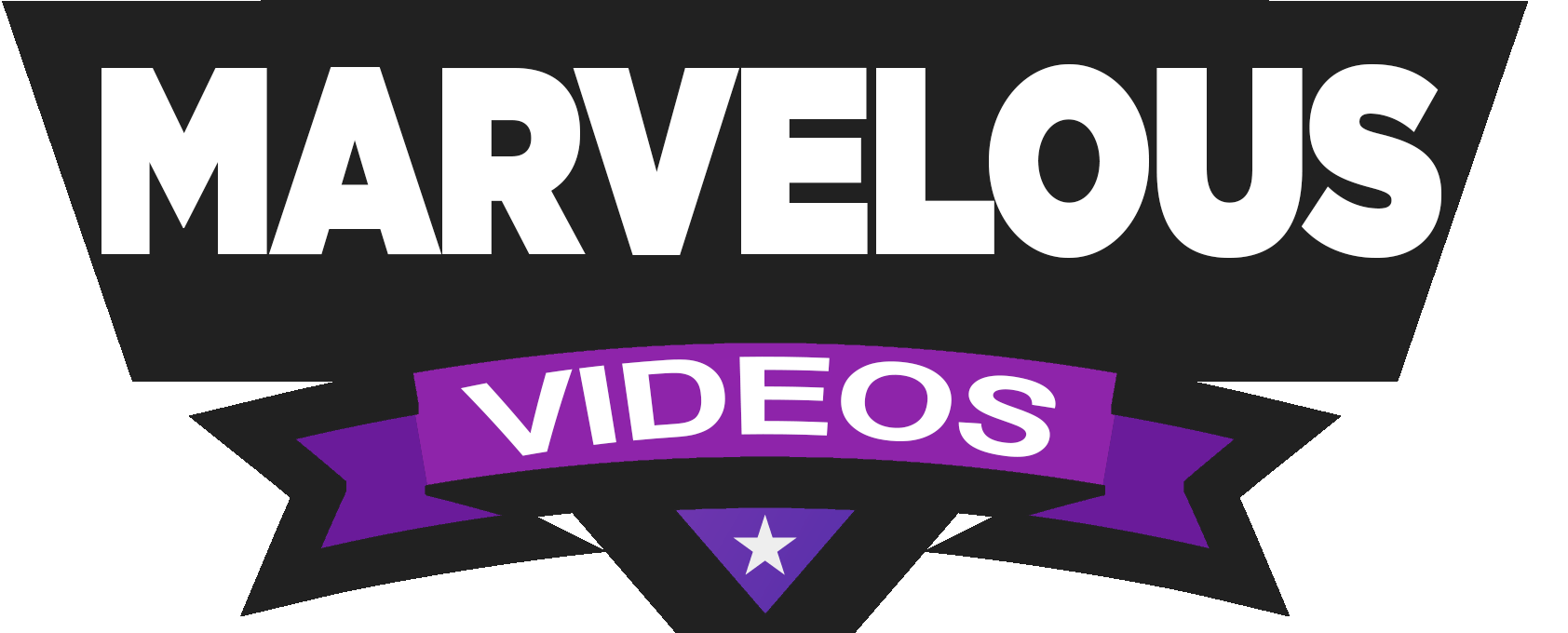Breaking Bad and Better Call Saul by Vince Gilligan exposed us to a wide range of vivid, perilous, and highly animated characters. Nowhere more than in the Salamanca Family is this description internalised.
Breaking Bad’s first season introduced us to Tuco Salamanca, the impulsive drug dealer Walter White teams up with. Better Call Saul’s fourth season introduces us to the immensely more charismatic and equally homicidal Lalo Salamanca.
But one guy was responsible for the collapse of this entire family, and if you told someone who does not watch these shows that person owns a chain of fried chicken restaurants, they would probably laugh at you. But who in today’s world is unaware of Gustavo Fring?
Fans even urge the franchise’s dead-eyed cartel boss, played by Giancarlo Esposito, to speak to them “as Gus” whenever they run across him in public. Who is Gus actually, is the better query. Because despite our love for him, we know so little about him. And that precise question will be addressed in this video. This is Gus Fring’s Origins – Explored.
Prior to explaining further, we have a very minor request.
Please subscribe to our channel if you enjoy our work. It may seem like a tiny gesture to you, but it means a lot to us.
How did Gus Fring become a key part of the Breaking Bad Universe?
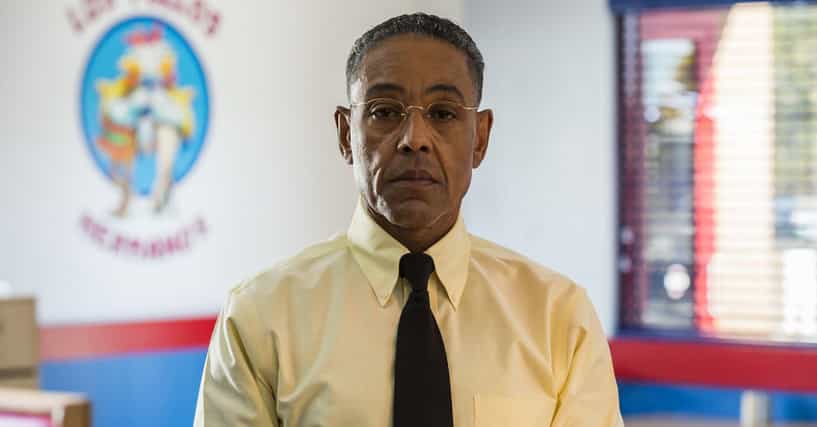
Gus Fring was once intended to be more of a background character rather than the legendary figure he is now. If you watched the first several seasons of Breaking Bad, you would be aware that Tuco Salamanca was built up from the beginning as the main adversary of the series.
But a few circumstances forced him out of the narrative earlier than Gilligan had expected; Firstly, there was a scheduling conflict with Raymond Cruz’s other TV project The Closer, where he was playing one of the lead characters in Detective Julio Sanchez, and secondly, he wanted to go for minimal screen time with maximum effect because he infamously detested Tuco’s character and the violent mindset he would have to get himself into to do him justice.
Because of these factors, it was nearly impossible for Raymond to remain on the programme while Tuco remained off-screen, so Gilligan made the decision to change tactics and introduce a new player to the game—someone who was completely the antithesis of Tuco Salamanca.
When Giancarlo Esposito was cast as Gus Fring, he was first informed that the character would be more of a recurrent minor enemy. His character was described as being “quite admirable, extremely courteous” in the exact acting notes he received for playing him.
But he believed that he had more to offer than the writers thought, so he chose to portray Gus as a straight man with a clear secret that he was able to conceal thanks to his expert body language management. Gus Fring went from being a candidate for a one-off appearance to playing a crucial role in Walter White’s plot, so it appears that the gamble paid off.
Gus is just one of three characters who have appeared on both Better Call Saul and Breaking Bad as series regulars; the other two are Saul Goodman and Mike Ehrmantraut. But that is the tale of how Gus came to be a crucial component of Vince Gilligan’s masterwork. Now let us explore HIS past, shall we?
Mandala to Face-Off – Gus Fring in Breaking Bad
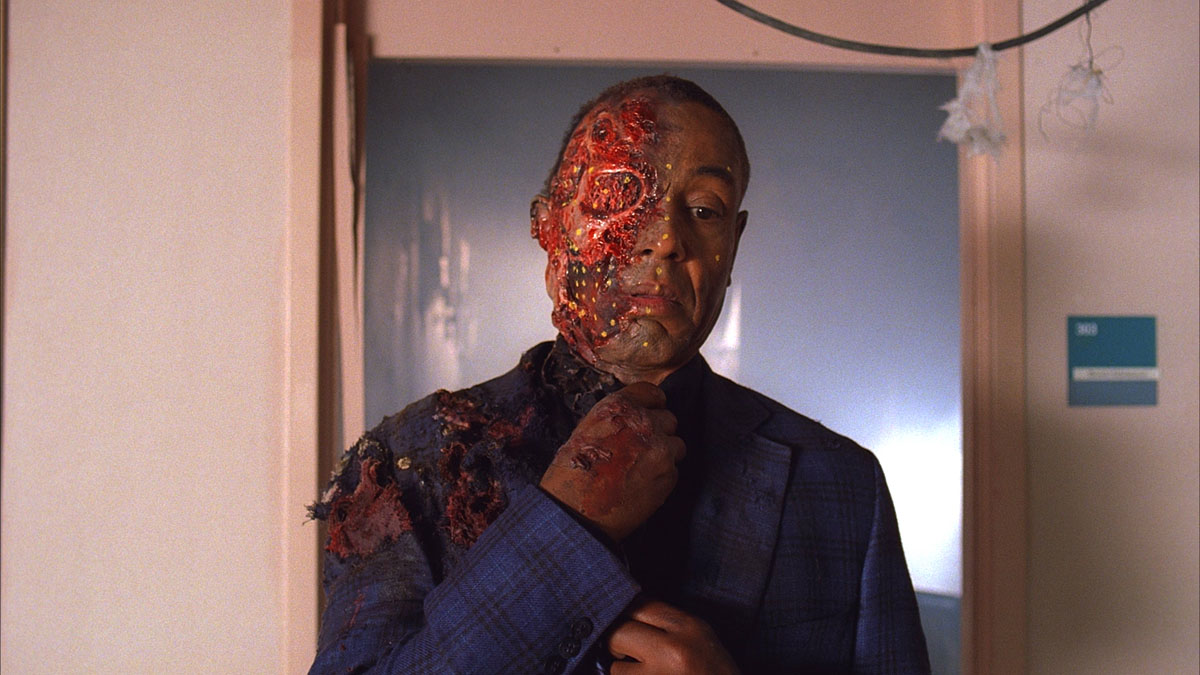
After Walter White lost his contact via a shot to the head, he needed a new way to distribute his signature Blue Sky; and fast. For a time, he used Jesse’s friends as his pushers and business was relatively good for what they were doing. But then Skinny Pete got robbed by junkies, Jesse ended up spiraling out of control with Jane, and then Combo was shot and killed whilst out slinging, which landed all of them into some deep trouble both financially and with the DEA.
So Walt needed a new distributor, and he found him through Saul, who made the iconic “I know a guy who knows a guy” remark, and lo and beholds; Gus Fring became a part of Walt’s descent into pure villainy. Gus debuted in the season 2 episode Mandala as an unassuming owner of a restaurant chain.
Walt was under the impression that he was being called to Los Pollos Hermanos for a face-to-face meeting with the distributor, unaware that he was being evaluated from the moment he stepped foot into the establishment; though he was able to put two-and-two together and deduce that the owner- the only person who had made contact with him and Jesse while they were at the chicken joint- was the distributor and so he returned to Pollos later that night alone to try and convince Gus to take him on as a meth cook.
He was initially rejected but after Gus saw the promise his product held, he decided to take Walter on as a cook with a rather steep initiation run; Walt was to deliver all the product he had on hand within an hour for $1.2 million or forget about Gus altogether, which really tells you all you need to know about the way this man operates. Throughout Seasons 3 and 4, Gus is engaged in conflicts on all fronts but is able to hold his own with his sheer ingenuity and foresight.
Walter becomes increasingly unstable under Gus’ employment as he comes to realize just how expendable he really is, and puts plans into motion to become indispensable. Gus is dealing with both his rebellious cook and the Juarez Cartel at the same time, and somehow coming out on top on both fronts, but he lets his emotions get the better of his judgment in his personal vendetta against the Cartel and that paves the way for his demise.
Gus succeeds in driving a wedge between Walt and Jesse and even convinces the latter to join him in his plan to massacre all the leaders of the Juarez Cartel, which shows you just how far he is willing to go to get what he wants. But in the end, it was his decision to bring in Jesse that would prove to be his undoing, because he severely underestimated just how loyal the kid was to Mr. White.
Gus played all his cards very carefully and kept them close to his chest, to begin with; only a handful of people knew about his plan to assassinate the Cartel Capos and Don, and even fewer knew just how deep the rivalry between him and Hector Salamanca ran. Unfortunately for Mr. Fring, one of these people was Jesse, who told Walt about Gus’ interactions with Tio and thereby sealed his death warrant.
In a stroke of criminal genius, Walt was able to eliminate three of his enemies by coercing one of them to become his friend and blow up the remaining two with a suicide bombing that ends up being successful. And so, Gus Fring, the drug distributor extraordinaire, Albuquerque’s Colonel Sanders, and public enemy No. 1 according to Hank Schrader, came to meet his end.
His death remains one of the most iconic scenes in Breaking Bad and also serves as the inspiration for the title of the Season 4 finale “Face-Off”; for reasons that should frankly be obvious. But that’s Gus in Breaking Bad recapped for those of you that might have forgotten. Let’s move on to how Gus became the Kingpin of New Mexico.
The Groundwork for Fring v Salamanca and the Rise of Gustavo’s Empire – Better Call Saul
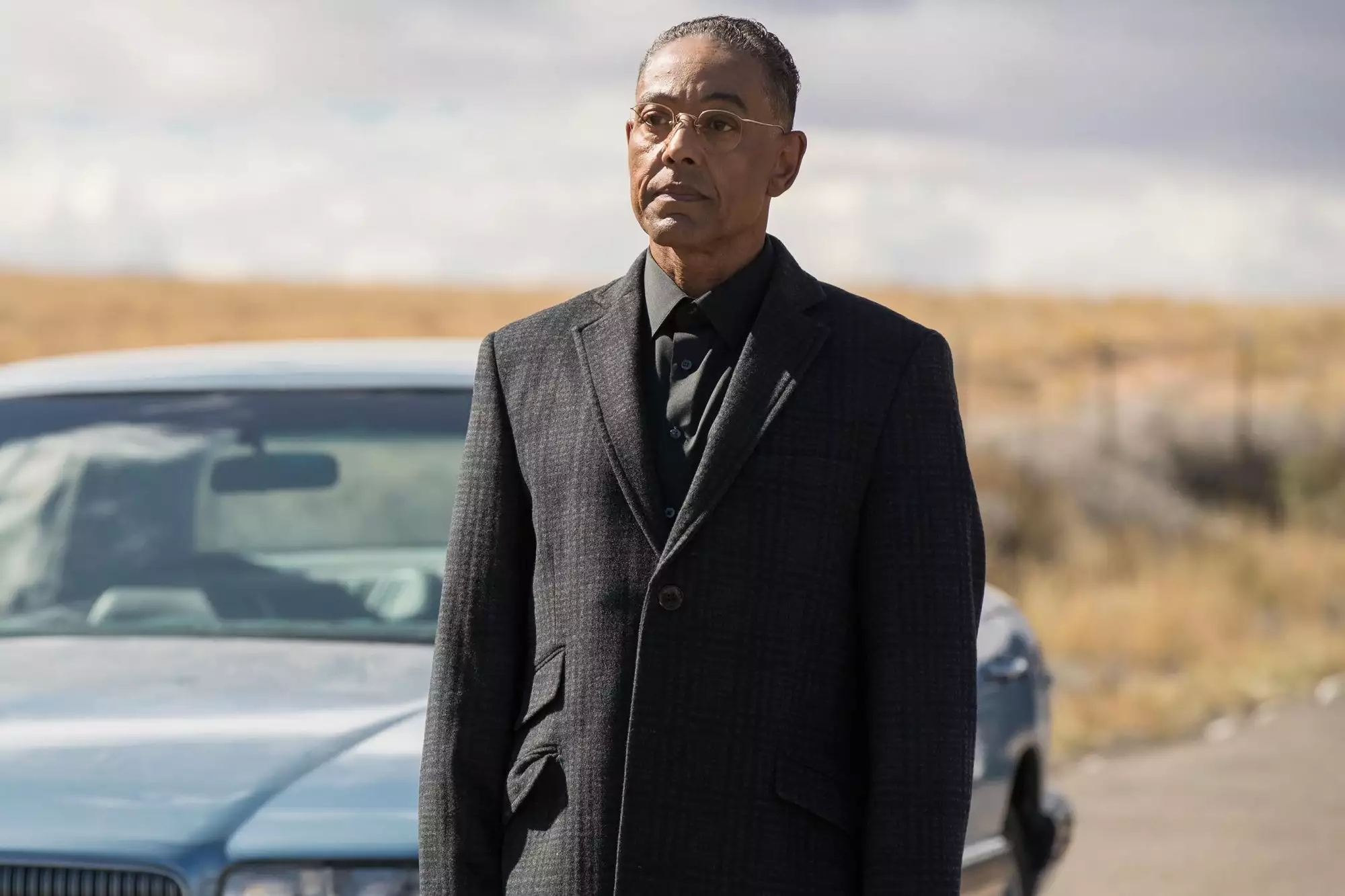
Although the Fring-Salamanca rivalry had been set up very neatly by Breaking Bad- just watch “Hermanos” if you haven’t done so already- Better Call Saul somehow enhanced that rivalry even though we knew that most of these characters would be making it out of this particular story alive. The first time we meet Gus is via Mike.
After Tuco Salamanca leaves him a broken mess and Hector threatens his family if Mike doesn’t play ball and gets Tuco’s charges reduced, Mr. Ehrmantraut is understandably pissed and out for blood. He calls up Lawson and checks out a few snipers in preparation for killing Hector, but before he can go through with it, he is stopped by Gus’ men with a simple note on a branch that reads “Don’t”.
Though Mike initially refuses to become Gus’ button man, we know from Breaking Bad that he acquiesces in the end, and we find out why in Better Call Saul; Gus uses his knowledge of Mike’s past actions as a dirty cop from Chicago and his son’s death to manipulate him into joining his own personal revenge quest and it works because he knows Mike needs security for his family. If you thought that Gus was insanely smart in Breaking Bad, then Better Call Saul will somehow make you feel like you underestimated him because some of the things he pulls off here are legit mind-boggling.
Gus uses Mike to sabotage Salamanca trucks knowing full well that the entire distribution network of the Cartel would be his if he played his cards right, and he did. Though Gus was furious at Nacho for trying to take his vengeance away from him by swapping out Hector’s heart medication, he was able to use him as a rat to stay toe-to-toe with Lalo Salamanca who can only be described as an eccentric in the series.
Gus shows us just how ruthless he is willing to be when he realizes that Hector not only survived his heart stroke but is also completely conscious; a fact that even his doctor misses out on, though to be fair to her, she doesn’t know Hector the way Gustavo Fring do.
And once he has confirmation, he stalls his treatment indefinitely; treatment that could have potentially given us a walking, talking Tio is Breaking Bad, but that isn’t how these stories usually go if you haven’t figured it out by now. The violent and intricate chess game that he engages Lalo Salamanca in throughout Seasons 5 and 6 mirrors his conflict with Walter White but on a scale that might be worse than simple death.
In BCS, Gus is still in the middle of setting up his meth lab, and if Lalo finds out what he’s building, his entire plan for revenge will come unraveling at the seams. So he keeps his paranoia meter on, his pistol at his ankle, his Kevlar on his chest, and his eyes on the ball at all times.
Ultimately, Gus is able to prevail over Lalo Salamanca, and we see him have an emotional outburst for the first time in our lives; he boldly denounces the Cartel and the Salamancas as vermin, and then, spoiler alert, kills Lalo and comes out victorious.
In fact, can even go so far as to say that prevailing over this dangerous cartel Don is what made Gus underestimate the comparatively timid chemistry teacher that was Walter White, but none of these instances answer the question: Who is Gustavo Fring? Something even Hank couldn’t figure out before dying. And while show-runner Vince Gilligan has said that he wants to leave Gus’ past shrouded in mystery, we can take all the information we’ve been given about him across both shows and come up with a general idea of who he truly is; and the answer might just shock you all.
What we know about Gus’ Past
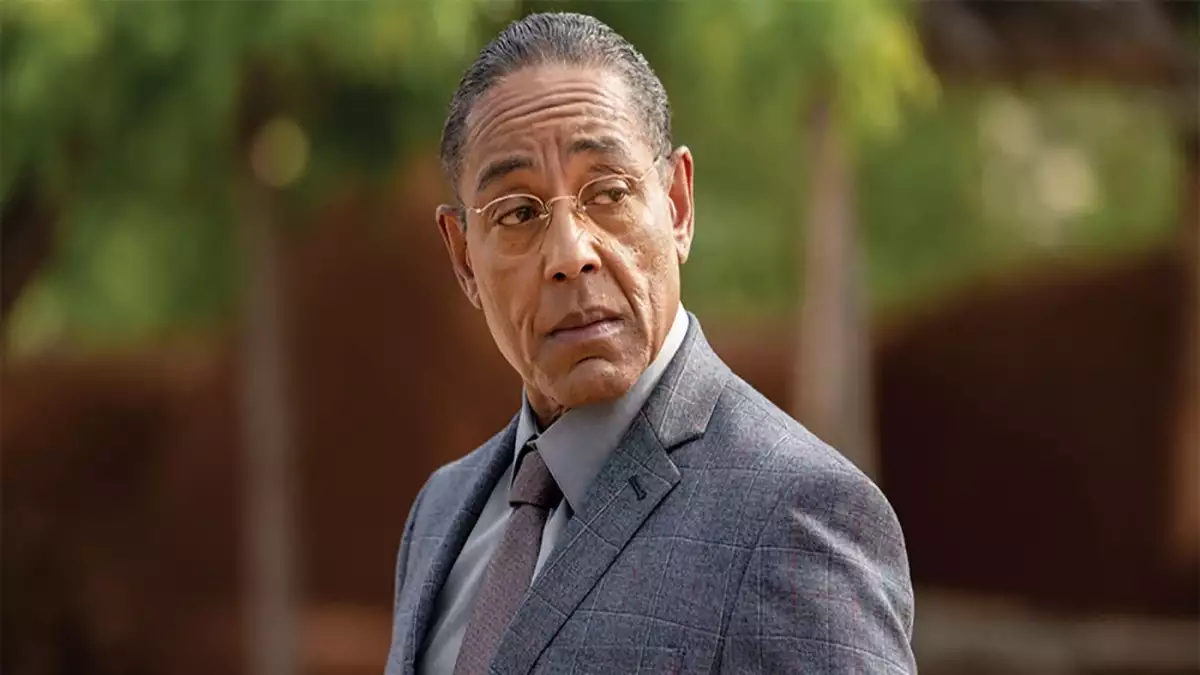
The aforementioned “Hermanos” episode gave us maximum information about Gus’ past, and that is insane, considering the flashback we got hardly lasted more than 6-7 minutes. In it, we saw Gus and his partner Max approach Don Eladio to partner up for the distribution of meth, but instead of hearing them out, Eladio has Hector Salamanca kill Max and forces Gus to work for him only because “he knows who Gus is”.
Eladio taunts him by saying he is not in Chile anymore, and we later see references to Gus’ Chilean ancestry from the mouth of the man himself. When he visits Hector in the hospital after saving him from the heart stroke he suffered from, Gus tells his unconscious mortal enemy the story of a lucuma tree and a coati from his childhood. This at least proves that Gus is from Chile because the lucuma plant is native to that region, and from the way he described his childhood home, Gus might have lived on one of the hills that surround the capital Santiago.
But in that story, we see that Gus’ ruthlessness isn’t an acquired trait; it’s innate. Gus tells Hector about the hours he spent making the shriveled husk of the lucuma he found, bloom, and bear fruit so his family could eat and alleviate their poverty to some extent.
That tree ends up becoming the life’s blood of his family, and when a coati attacks it and steals its fruit, Gus resolves to take revenge on the rodent instead of letting things be. He patiently waits for the coati underneath his home, knowing fully well that he has been injured thanks to a subsequent trap he had set; and when it finally shows, Gus captures and tortures it to death.
This is the first time we see him directly acknowledge his own twisted nature, as he tells Hector that he could’ve given it a clean death and that it would have been the merciful thing to do, but in the end, the coati lived for a long time, the implication being clear without even using the T-word.
In season 3 episode 7 of Breaking Bad, we get a flashback scene of Hector Salamanca with his nephews where he gets a call from Bolsa telling him that Eladio has decided to let Gus handle the distribution of his product. Hector counters this by saying he doesn’t trust the chicken man even though he’s a “grand generalissimo”. And across both Breaking Bad and Better Call Saul, we get multiple references to an incident that occurred in Santiago which is something that Gilligan has deliberately said we will not get to see.
But given the fact that Lalo, Eladio, and Hector are all aware of this incident, and the fact that Gus’ Madrigal associate Peter Schuler was directly involved in it and seemingly saved Gus’ life during it, we must admit that figuring this particular incident out could hold the key to revealing Gus’ identity. Because apart from the handful of scenes that refer to his Chilean past, there is nothing to connect him to that country officially.
Gus even stresses that his Chilean past is more important to him than the Cartel once Hank figures out he’s facilitating Heisenberg and only moves on to taking care of his troubles once he is certain that no one will find out exactly who he really is.
So keeping in mind these factors, the secrecy that Gus treats his past life with, and the fact that he invoked Pinochet’s name when he was being questioned by the DEA gives us everything we need to try to deduce his identity, so let’s get to it.
Who is Gustavo Fring in reality? Gus’ connections to Pinochet’s Regime Explained
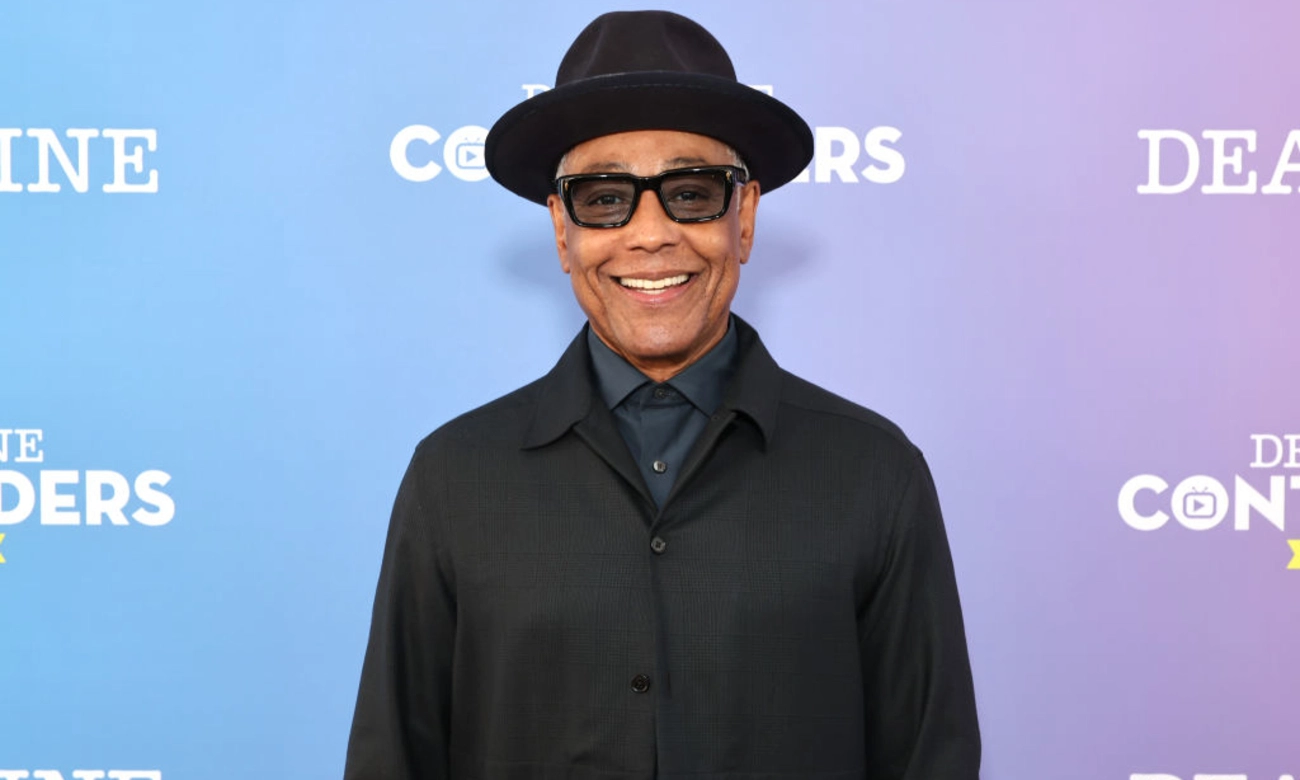
The one thing that we can be very certain of when it comes to Gus Fring’s identity is that he took on the name Gustavo Fring after immigrating to Mexico from Chile in 1986. If that year is ringing any bells in your head, then you are rather knowledgeable in world affairs Marvelous Viewer, because that was also the year that there was an assassination attempt on Pinochet’s life.
Furthermore, we know that Gus must have been a part of the military when he was in Chile not just because he’s called the Grand Generalissimo by Hector in a flashback scene, but also because of the way he operates and the sheer knowledge he possesses about personal security.
It was really cool to see Mike call Walt out of the blue and tell him to go back home before he did something stupid when Walt showed up out of nowhere intending to kill Gus at his home precisely because it was the definition of hiding in plain sight. There was nothing on that street that could have tipped Walt off to the fact that he was under constant surveillance; and yet he was.
In Better Call Saul, we saw that surveillance apparatus in play in Gus’ chess match against Lalo Salamanca and it is practically impossible for someone to come up with something so absurdly elaborate and clandestine if they do not have prior knowledge of the same.
Now you can argue that it could’ve been Mike who set it all up, after all, he is the guy who knows and does it all, but we’d wager to guess that it was Gus all along. Then there is also the fact that Gus’ hired assassins were all wearing field combat gear, as if they were part of a Death Squad or something, whereas we’ve seen the Cartel use hitmen who prefer wearing plain clothes and flashy chains from the season 5 episode Bagman.
This difference is made clearer when you take into account the fact that Juan Bolsa was under the impression that he was being attacked by Federales and not Gus’ hired hitmen. And, if you pay close attention to details while watching the show, you’ll notice that the limited interaction that takes place between the hitmen and Nacho/Gus/Lalo shows that their Spanish accents are different from the “westernized” accents of the Mexican/Hispanic characters of the show.
In fact, their accent is quite similar to the accent Gus employs when he gets emotional in the first episode of Season 6 Part B, which at least goes to show that his contracted team of killers had Latin American origins. We also know that Gus’ laptop had military-grade encryption and would have been impossible to break into without knowing the right method, as was revealed by Hank Schrader after Walt and Jesse enacted their magnetic Plan of Action; and lastly, we know that Gustavo Fring somehow managed to meet Peter Schuler- a German national- in Santiago in the 1980s and something transpired which led to them developing a life-long business association based off this mutual sense of loyalty to their past experiences.
This all very clearly indicates that Gus Fring was a part of Pinochet’s Military Junta, and the fact that he was called Generalissimo indicates that he was one of Pinochet’s generals. But we would go so far as to confirm that suspicion and put a couple of names to his supposed identity; in our opinion, Gus Fring could have been either Air Force General Gustavo Leigh Guzman or General Humberto Gordon Rubio, both of whom served the Pinochet regime albeit at different points in time.
Gustavo’s Chilean Past – Explored
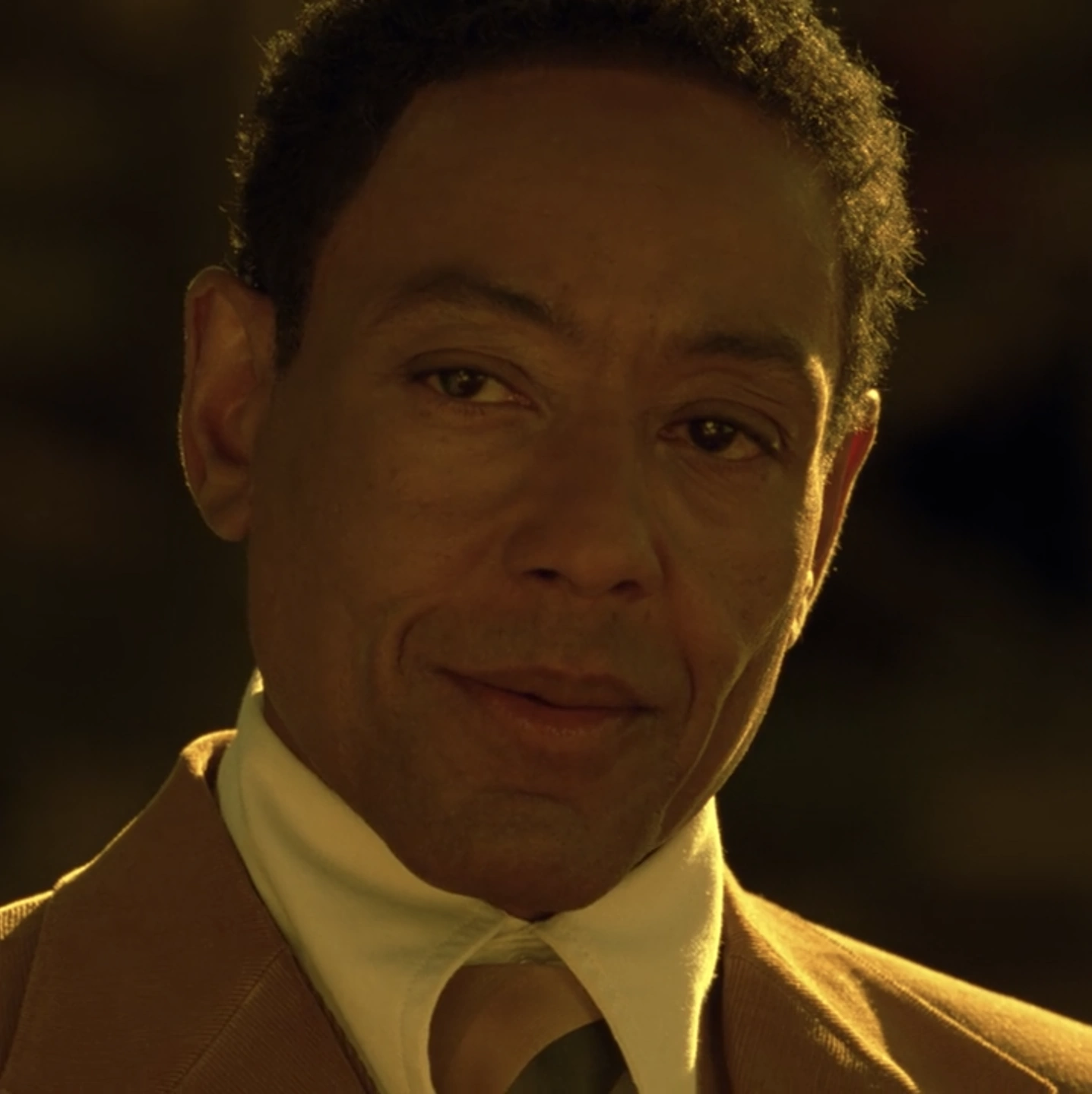
We never get an official birth date for Gus from either TV show; all we have to go off with is his general appearance, which is quite deceiving, no pun intended. By all means, he looks like a man in his late 40s or early 50s, but he could just as easily be significantly older than that.
After all, he spent 20 years patiently plotting his revenge on the cartel, which shows wisdom and patience that would be impossible for a younger man to think up of. But because we don’t know how old Gus truly is, it is also possible that he wasn’t born in the 1940s or even ’50s; he could be much, much older than that, and that would neatly fit into the real-life birth dates of both Gustavo Leigh and Humberto Gordon.
Now, circumstances of birth are another factor to consider because Leigh comes from a military background and we have little to no information on Gordon as it is, so it is difficult to pin down whether Gus was using the lucuma tree story as a simple metaphor or whether it was a real-life event that occurred. But we must keep in mind that Breaking Bad takes certain creative liberties when it comes to portraying instances in the universe.
Many of their scientific claims have been debunked in real life, and there have even been a few historical inaccuracies in the story, so we can put down Gus’ birth date as another matter of creative licensing. Having said that, let us get into why we think Gus might be one of these two Chilean generals. Let’s start with Gustavo Leigh Guzman. Leigh was renowned as a staunch opponent of Marxism and an economic maverick in the Pinochet regime.
In fact, he was dismissed in 1978 by Pinochet for disagreeing with his methods and he carried that label of opponent for the rest of his life. There are a few things going in favor of this identity. The most obvious one is the name. Gustavo is a dead giveaway, yes, but let’s focus on his middle name for a minute. Leigh was the surname of this Chilean general’s father, but its English meaning relates it to meadows and pastures.
We know that Gus nursed the lucuma tree outside his family home until it could bear fruit and then started to sell that fruit to the local markets to help sustain his family. While a single tree is far from a meadow, the word Leigh and this story do share a correlation, as you can see.
Moreover, Pinochet viewed Leigh as a political rival in real life who was out to take his position despite the latter claiming otherwise, so it is quite possible that Leigh was clandestinely involved in the 1986 assassination attempt on Pinochet and that the matter was struck from the public record; and the kicker is that in season 5 episode 1, Lalo asks Bolsa whether the Santiago incident was business or personal, which lends credence to this line of thought.
But in real life, Gustavo Leigh became a target of the Manuel Rodríguez Patriotic Front in 1990- the same organization responsible for the attempt on Pinochet’s life- and the biggest thing working against this theory is the fact that he died in 1999 from heart disease in the Santiago Air Force Hospital, but what is most interesting is the fact that 1990 assassination attempt left him without one eye.
And if you guys remember how Gus died in the TV show, you can see why we think he is actually Gustavo Leigh in disguise, can’t you? Given Gus’ natural genius, it is possible that the Gustavo Leigh who died in ’99 was a body double and he is the real deal. We’ve already seen body doubles being used in the series, so it would make a lot of sense if that was the case. And more than that, Leigh would have the kind of influence needed to destroy all physical evidence of his own existence, given the fact that he was in Pinochet’s inner circle at least at the beginning of the Junta.
But so would Humberto Gordon Rubio, our second suspect, because from 1980-1986, he served as the Director of the CNI- the National Information Centre- which was effectively Pinochet’s Gestapo. Now, we bring up Rubio for two key reasons; the first being Gus’ penchant for torture, and the second being Colonia Dignidad.
The torture bit you will understand given we’ve already called the CNI Pinochet’s Gestapo, but the Colonia Dignidad bit is the real kicker here. Colonia Dignidad was an infamous colony of Nazi German settlers who fled Nazi Germany and found asylum in this remote Chilean location.
It was revealed decades later that the Pinochet Regime used Colonia Dignidad as a torture and detainment center for political dissidents and such, and the leader of this place was a man called Paul Schafer. Schafer was one of the worst Nazis to never be tried at Nuremberg, and he collaborated with the Pinochet regime for literally decades before he went on the run and found himself in Argentina.
Paul Schafer not only provided a safe space for Pinochet to violate his victims, but he also contributed to the same and there are reports that suggest ex-Nazis partook in these human rights abuses as well, chief among them being the infamous “Angel of Death” Joseph Mengele. And, if you’ve caught on with our reasoning apparatus, then you’ll know that Paul Schafer could very well have been the name Peter Schuler used to go by when he was hiding out in Chile.
We know that Schuler was born in Germany and that he was in Santiago when that incident went down. We also know that after going their separate ways in 1986, Peter Schuler and Gustavo Fring continued to work together thanks to Madrigal, which decided to take on Gus’ restaurant chain under its fast food wing, thus helping him grow his meth empire. And even Max Arciniega, perhaps the only person Gus ever truly loved, kind of corroborates the fact that Gustavo was indeed involved with Pinochet’s higher command.
Don’t you guys ever wonder exactly how Gus could’ve picked Max out of the slums of Santiago and “made him who he is” when he himself grew up poor? Sure, it’s possible that Max and Gus go way, way back and that they experienced poverty together, but from the way Max talked about Gus, he seems more like a benefactor than a peer. It is also possible that Gus found Max after making a boatload of cash and then initiated a relationship with him, but where did he get that money? The answer lies in something called Black cocaine.
Pinochet’s former right-hand man- Manuel Contreras- revealed that the Chilean dictator used his hard public stance on drugs as a cover to traffic illicit substances himself. Black cocaine is a variety of drugs that is allegedly untraceable by most conventional means and was created on Chilean soil during Pinochet’s regime to help sustain his economy and his personal greed. But from Gus’ meeting with Eladio, we know that his knowledge of the cartel’s coke supply was spot-on, and we can also infer that drugs aren’t something new to him.
It is heavily implied that the CNI took on the role of synthesizing and distributing the black cocaine for Pinochet, and that would put Humberto Gordon Rubio in the driving seat of this entire operation; given the fact that he was the head of the CNI from 1980 to 1986, with ’86 being the year that Pinochet was almost killed while traveling to Santiago from his personal estate. But any knowledge of what Rubio did is completely confidential and even he died in the year 2000, though the circumstances of his death are not known to the public.
So when we put all of these dots together, we get a bigger picture that still isn’t quite clear, but is clear enough for us to make an educated case. We personally think that Gustavo Leigh Guzman and Gustavo Fring are the same people and that Fring, after being dismissed from the Air Force Command, became embittered with Pinochet and tried to help the Patriotic Front take him out in ’86 to disastrous effect.
Given the fact that he was a high-ranking official in Pinochet’s earliest years as a dictator, he would have intimate knowledge about everything we’ve brought up so far- Colonia Dignidad, Black cocaine, Chilean death squads, etc- and he would also be in a position to use them to his advantage once he was able to scrub his past clean.
Max was to become his right-hand man in the new drug trade that he would open up, and Peter Schuler ended up becoming an accomplice presumably after they were discovered trying to finish the job on Pinochet after he arrived in Santiago following the shootout at Cuesta de Las Achupallas which failed to end his life. The two of them escaped from Chile with their respective new identities and ended up reconnecting years later thanks to Madrigal, Los Pollos Hermanos, and a mutual desire to get rich off of crystal meth.
In fact, Schuler could’ve been the one to propose the venture, given the fact that Nazis were actively promoting meth usage during WW2 and he would’ve known all about its effects and potential profit margin as an illicit substance. And so the two war criminals continued to live on as “decent men in indecent times”, with society blissfully unaware of the monsters that lurked beneath their facades.
Marvelous Verdict
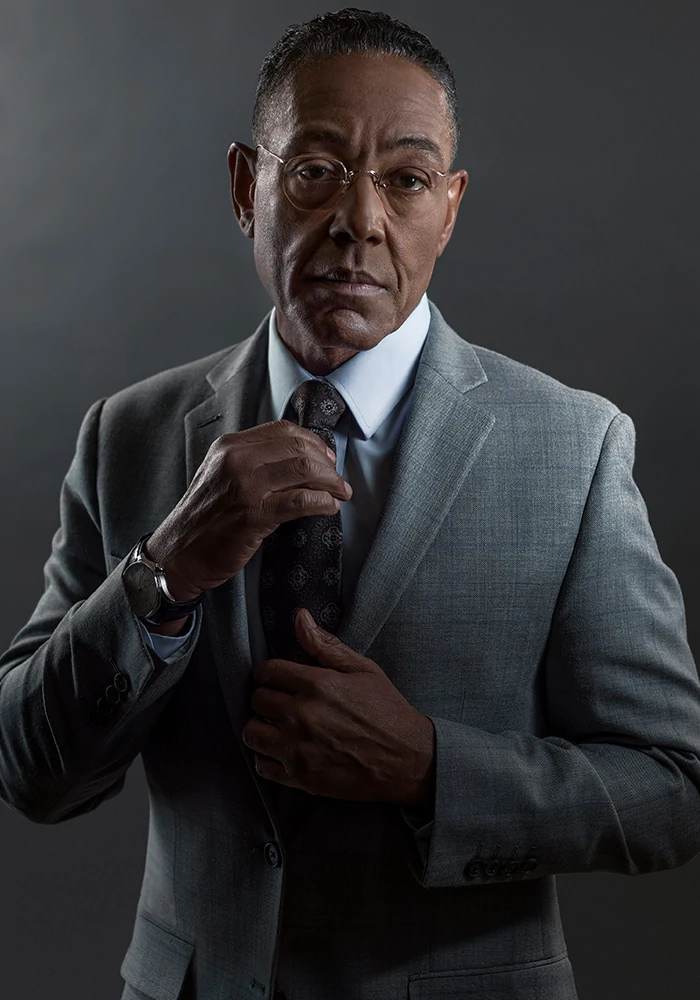
Giancarlo Esposito has expressed his desire to do a spin-off series focusing on Gus in the future, and we have literally just given you the first couple of seasons of that spin-off if it ever ends up happening and we are actually right with our theorising.
But here’s the thing; it actually doesn’t matter even if we end up being wrong about Gus being Gustavo Leigh and Peter being Paul Schafer, because that would make the reveal that much more mind-boggling. For all intents and purposes, we agree with Vince Gilligan when he says that Gus should remain an enigma and shrouded in mystery.
But the curious explorer within us couldn’t help but speculate, and that led us down a rabbit hole that you now have in front of you in video format. In the view of Marvelous Videos, Gustavo Fring = Gustavo Leigh is the most likely theory for Gus’ real identity, but we’ll just have to wait and see if we are correct or not. Let us know what you think about our theory in the comments below, though!
